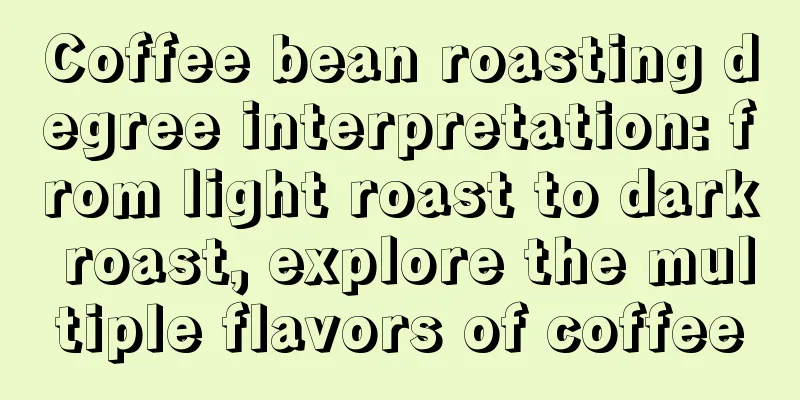Coffee bean roasting degree interpretation: from light roast to dark roast, explore the multiple flavors of coffee

Light roastLight roast is the first stage of coffee bean roasting, also known as city roasting. At this stage, the color of the coffee beans is light yellow to light brown. Due to the shorter roasting time, the coffee beans retain most of their original flavor and acidity. Lightly roasted coffee has a bright and refreshing taste with a variety of aromas such as flowers, fruits and tea leaves. It usually has high acidity and a light experience, leaving a soft and clear aftertaste in the mouth. Medium roastMedium roast is a stage between light roast and dark roast. At this stage, the coffee beans begin to become darker and a shimmer of oil appears on the surface. Medium roasting produces a more balanced and complex flavor profile. It retains some of the original flavor and adds some new and pleasant aromas. This type of coffee usually has moderate to high acidity and a full and smooth taste. Dark roastDark roasting is the final stage of coffee bean roasting, also known as French roasting or Italian roasting. At this stage, the coffee beans become very dark and the surface oils are fully released. Dark roasting causes the coffee beans to lose most of their original flavor, but gives them a strong, mellow and bitter character. This type of coffee usually has low acidity and a full-bodied taste, leaving a lasting and memorable aftertaste in the mouth. Multiple flavor explorationDifferent degrees of roasting bring diverse flavor characteristics to coffee. From light roasting to dark roasting, each stage presents a different level and dimension of taste experience. Light roasting emphasizes the original flavor and bright and refreshing characteristics. It allows people to taste the subtle differences between different origins and different varieties, and appreciate the natural sweetness and acidity of coffee beans. Medium roasting retains some of the original flavor while adding more complexity and fragrance. It makes the coffee have a richer taste and layers, bringing a pleasant and irresistible aroma. Dark roasting gives coffee a rich, strong and bitter character. It emphasizes the unique chemical changes produced during the roasting process, giving the coffee beans a deep and fascinating aroma. ConclusionWhether it is light roasted, medium roasted or dark roasted, each roasting degree brings different flavor characteristics to coffee. By exploring the diversity of coffee beans at different roasting degrees, we can better appreciate and taste the endless pleasure that this delicious drink provides us. |
<<: The origin of coffee beans: tracing back around the world
>>: Chinese coffee beans: the rise of local quality
Recommend
Turkish coffee, taste the tradition and experience the unique art of drinking
Turkish coffee is a traditional drink with a long...
Is it possible to drink coffee beans directly without grinding them?
Is it possible to drink coffee beans directly wit...
Finding coffee beans, a new experience of buying in stores and online
Abstract: This paper explores the new experience ...
Why do coffee beans need to be protected from light?
Coffee beans are one of the most popular drinks i...
Is it really harmful for boys to drink coffee?
Whether it is harmful for boys to drink coffee is...
China's main coffee bean producing areas: explore the mysterious coffee town!
China's main coffee bean producing areas: exp...
What types of coffee beans are there?
Coffee beans are a widely used food and beverage ...
Choice after grinding coffee beans: brew or brew?
Choice after grinding coffee beans: brew or brew?...
Barista professional learning content
Barista professional learning content Barista is ...
Comprehensive analysis of coffee bean varieties to explore the wonderful world of global coffee beans
Comprehensive analysis of coffee bean varieties t...
How to Enjoy a Perfect Cup of Coffee
introduction Coffee is a widely loved drink, but ...
Best coffee options for breakfast
Best coffee options for breakfast Breakfast is th...
Find the best places to learn about coffee
Find the best places to learn about coffee In mod...
Twelve common coffee bean varieties, how many do you know?
Coffee is one of the most popular beverages in th...
Coffee Beans Revealed: Learn About the Main Varieties
Coffee is one of the most popular beverages in th...









